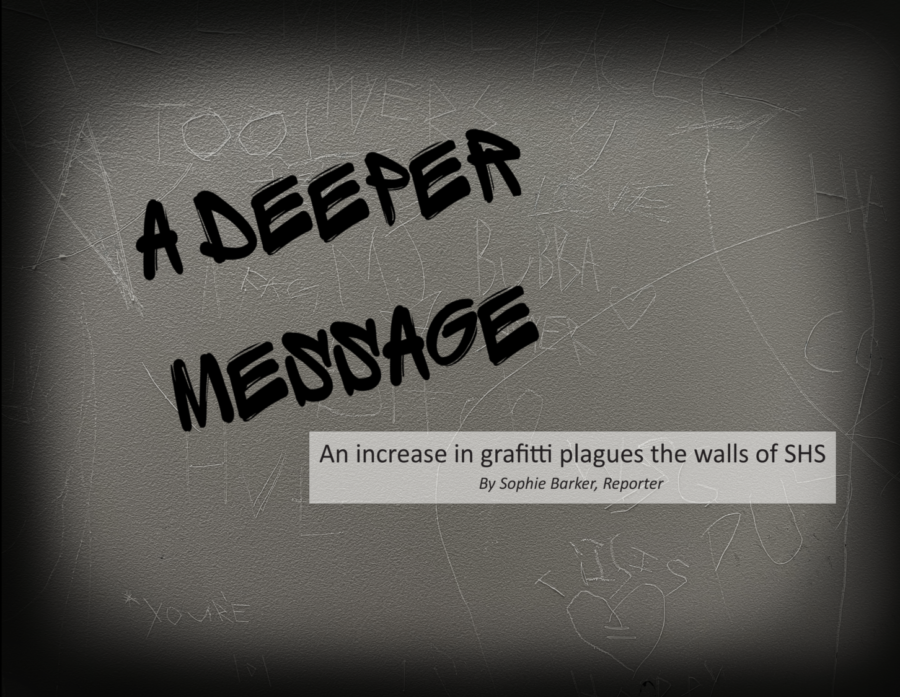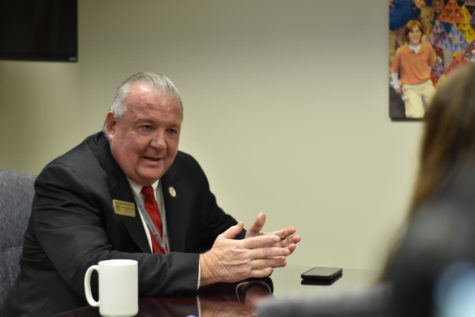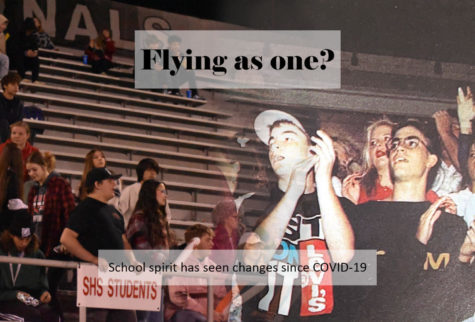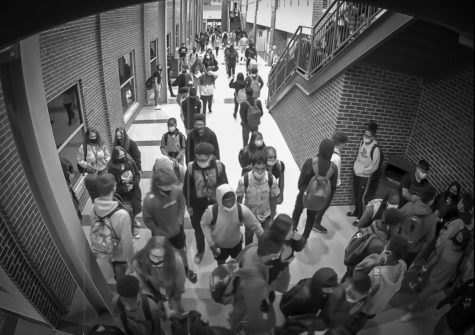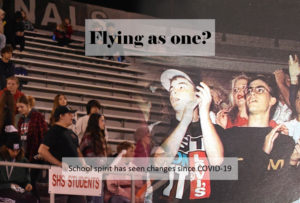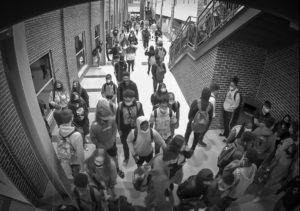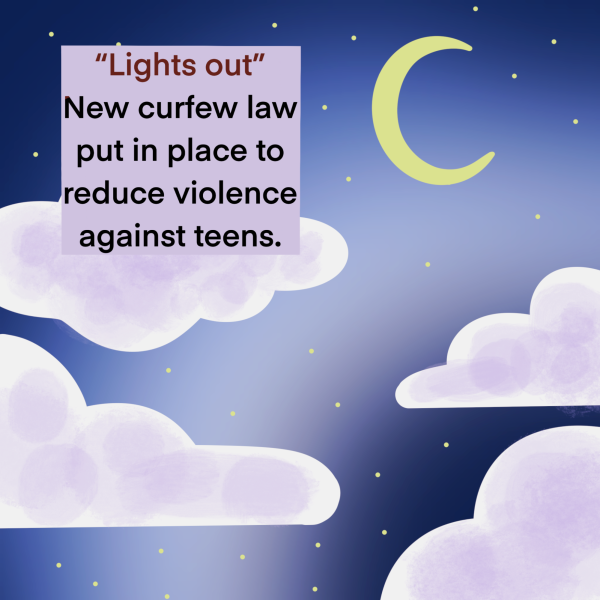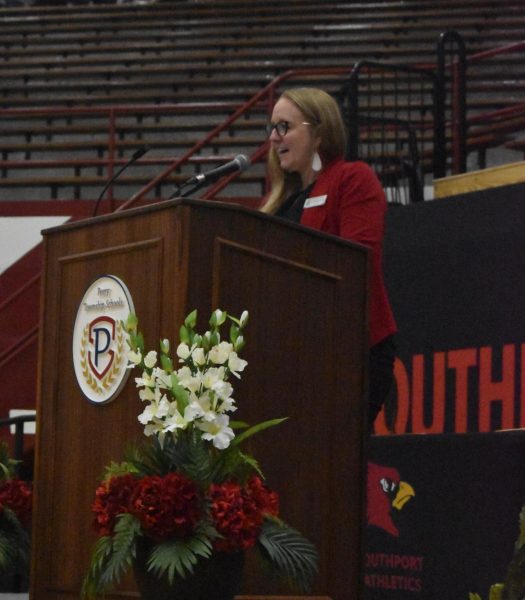A deeper message
An increase in graffiti plagues the walls of SHS
Whether it be in the form of positive or negative messages, graffiti has been a common occurrence in American high schools for decades. SHS is no exception to this phenomenon. In the music hallway alone, writing can be found on almost every stall divider and wall of each restroom.
Graffiti has been an issue at SHS for years, and students and staff alike are inconvenienced by what may seem like an innocent pastime to others.
“I wish some students would take more pride in our beautiful school,” Head custodian Charity Vash said. “and think twice before they feel the need to write on the walls.”
Sophomore Johnathan Ramirez-Cueto remembers doing an activity in elementary school where the students would write positive messages on the bathroom walls in order to drown out the negative graffiti. But even now when he visits the restrooms before going to class in the morning, it isn’t uncommon for him to see hateful speech scattered on the walls.
“They’re usually negative, especially in the bathrooms,” Ramirez-Cueto said. “I’ll just see a lot of writing, a lot of hateful messages, just rude things in general.”
Assistant Principal Chris Finkhouse has worked at SHS since 2005, and when he was teaching in the classroom, he almost never noticed graffiti as a problem. When he joined administration, however, he was able to view the full extent of the graffiti problem. But even now, he doesn’t think there has necessarily been an increase in the actual graffiti.
He says that student eagerness to write on school property seems to come in waves, which may lead to the perception of an increase in the activity.
“You could go months without anything and then all of a sudden somebody gets it in their head, ‘This is a fun thing to do,’” Finkhouse said. “And then will kind of repeat it for a day or two.”
More often than not, students who do graffiti are caught quickly. Administration, teachers and student services often do random restroom checks for students skipping class, and sometimes this can lead to the discovery of graffiti or even students being caught in the act. When a student isn’t caught in the act, student services works to figure out when the graffiti happened and who has been in a vandalized bathroom multiple times.
When students are caught vandalizing and covering the walls with graffiti, each individual situation is treated differently based on different factors, unlike some school policies such as tardies. As for preventing graffiti completely, Finkhouse says that this is a nearly impossible task seeing as the most common centers for graffiti are in the secluded areas of the bathrooms.
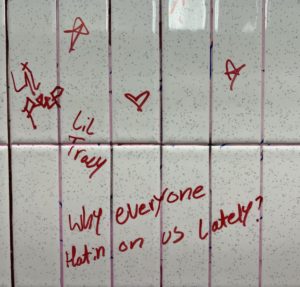
“Obviously we’re not going to put cameras in restrooms, …” Finkhouse said. “We would never do something like that, so it’s kind of tough to prevent that.”
Although many students see graffiti, Finkhouse says that the writings are promptly erased from the walls before the messages can become widespread across the school.
“That’s a big testament to our custodial staff,” Finkhouse said. “Charity Vash, our head custodian, is amazing, real quick to respond and gets it cleaned up and we really appreciate her work on that.”
Graffiti has been an ongoing issue in Vash’s career at SHS, but she says that there has definitely been an increase in the past few years. With that increase, graffiti often disrupts the daily routines of janitors who are in the middle of working and have to clean graffiti as soon as it is reported.
As for why students do graffiti, there are a number of potential reasons. Ramirez-Cueto says that he thinks it’s a stress outlet for students who don’t always feel safe or comfortable in school, and Vash says it may be a way for students to express themselves when they don’t know how to deal with their feelings maturely. Finkhouse says that when he asks students for a reason, the typical responses are along the lines of boredom, artistic expression or jokes.
Junior Evelynn Garcia hasn’t noticed graffiti much until this year, but the results of other students’ boredom, stress or creativity often causes her annoyance when she’s simply trying to go through her school day.
They work really hard to clean the school and their job is tough.
— Assistant Principal Chris Finkhouse
“I don’t really see a point in writing in the restrooms,” Garcia said. “I mean, you’re also using the restroom, there’s no point in just trashing something that you’re also using.”
Finkhouse’s message to students who do graffiti is to think about who they will be affecting before they act. Although many students feel uncomfortable in the presence of hateful words and vandalized property, he says the affected people are mainly the custodians who work so hard to keep SHS a clean and safe environment.
“They work really hard to clean the school and their job is tough,” Finkhouse said. “So when you decide to go graffiti a bathroom, just understand (that) your chief impact is our custodians who are working to keep the school clean for you, so maybe think about that before you do it.”

Hi sisters, I’m Sophie Barker and this year I’ll be working as the News Editor for The Journal! I’m currently a junior and this will be my second...


